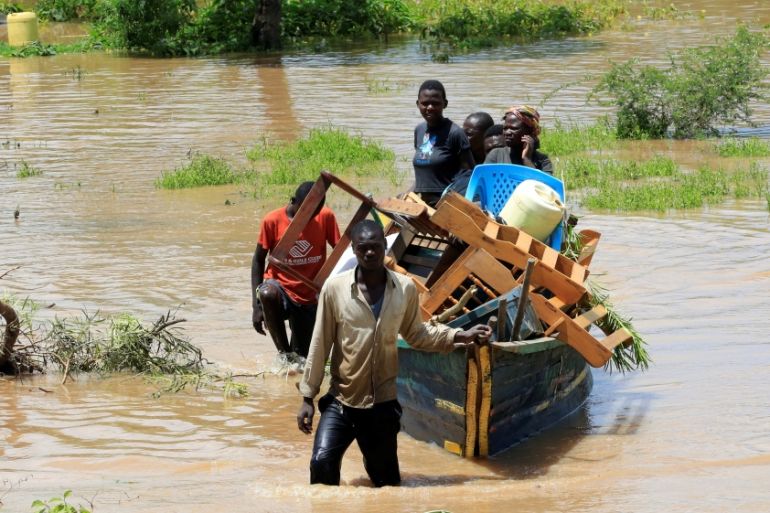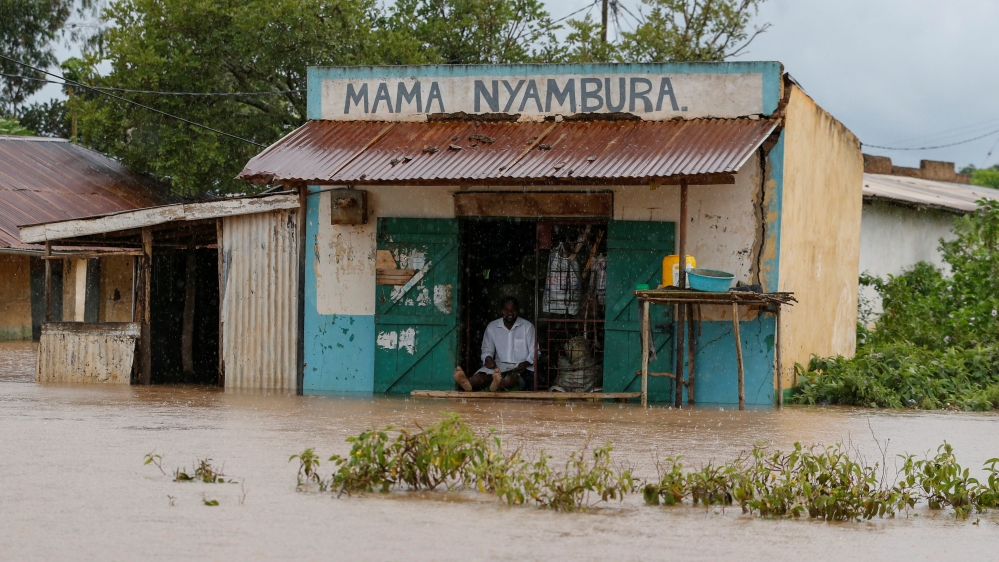Kenya floods kill 194 people, displace tens of thousands
Government says 100,000 people displaced following torrential rain in the western part of the country.

Floods and landslides caused by heavy rain in Kenya have killed nearly 200 people, displaced 100,000 and strained critical infrastructure, officials said on Wednesday.
The heavy rain, which accelerated in mid-April, is expected to continue in already hard-hit areas in the coming weeks, the Kenya Meteorological Department said in its most recent forecast. May usually marks the end of the rainy season.
Keep reading
list of 3 itemsKenya camps: 500,000 people at risk of contracting COVID-19
How Kenya’s artists are coping amid COVID-19 pandemic
In Budalangi, western Kenya, residents have had to carry their belongings away from their submerged houses using boats and motorbikes, after the River Nzoia burst its banks.
Government spokesman Cyrus Oguna said on Twitter that over the past three weeks, floods had displaced 100,000 people – complicating efforts to protect against the spread of the coronavirus, which has killed 24 people in the country.
The government is providing food and water to the displaced people and has also requested the Ministry of Health to provide them with masks as a precautionary measure.
Floods and landslides have been concentrated in western Kenya and have so far killed 194 people, Eugene Wamalwa, the minister in charge of relations between the regional leadership and the national government, said.
“Yesterday alone, we have lost 30 people in a matter of 24 hours,” Wamalwa said.
Evacuations
Energy Minister Charles Keter said the water levels at two major Kenyan dams were unprecedentedly high.
The two dams, Masinga and Turkwel, have a combined installed electricity generation capacity of 140MW, representing about 6 percent of Kenya’s total installed capacity.
As Masinga also feeds into several other dams, officials advised people living near those downstream reservoirs to evacuate.
“We are telling people who are downstream, Garissa all the way to Tana River – things are worsening,” Keter said about residents of the two eastern counties.
“We are asking them to move. Let them not wait for water, because this is historical.”
Security officials were already evacuating residents in high-risk areas, Interior Minister Fred Matiang’i added.
“We are not waiting for people to move – we are moving some people away from danger,” he said.

Floods have also destroyed 8,000 acres (3,237.5 hectares) of ricefields, the cabinet secretary for water and irrigation, Sicily Kariuki, said.
Kenya was already facing a looming rice shortage due to shipping disruptions caused by the coronavirus outbreak.
Heavy rains and landslides could also lead to water shortages, Kariuki said.
“The infrastructure to deliver water has been washed away … pipelines have been clogged,” said Kariuki, asking residents of several cities, including the capital Nairobi, to use their water in a “rational” manner.